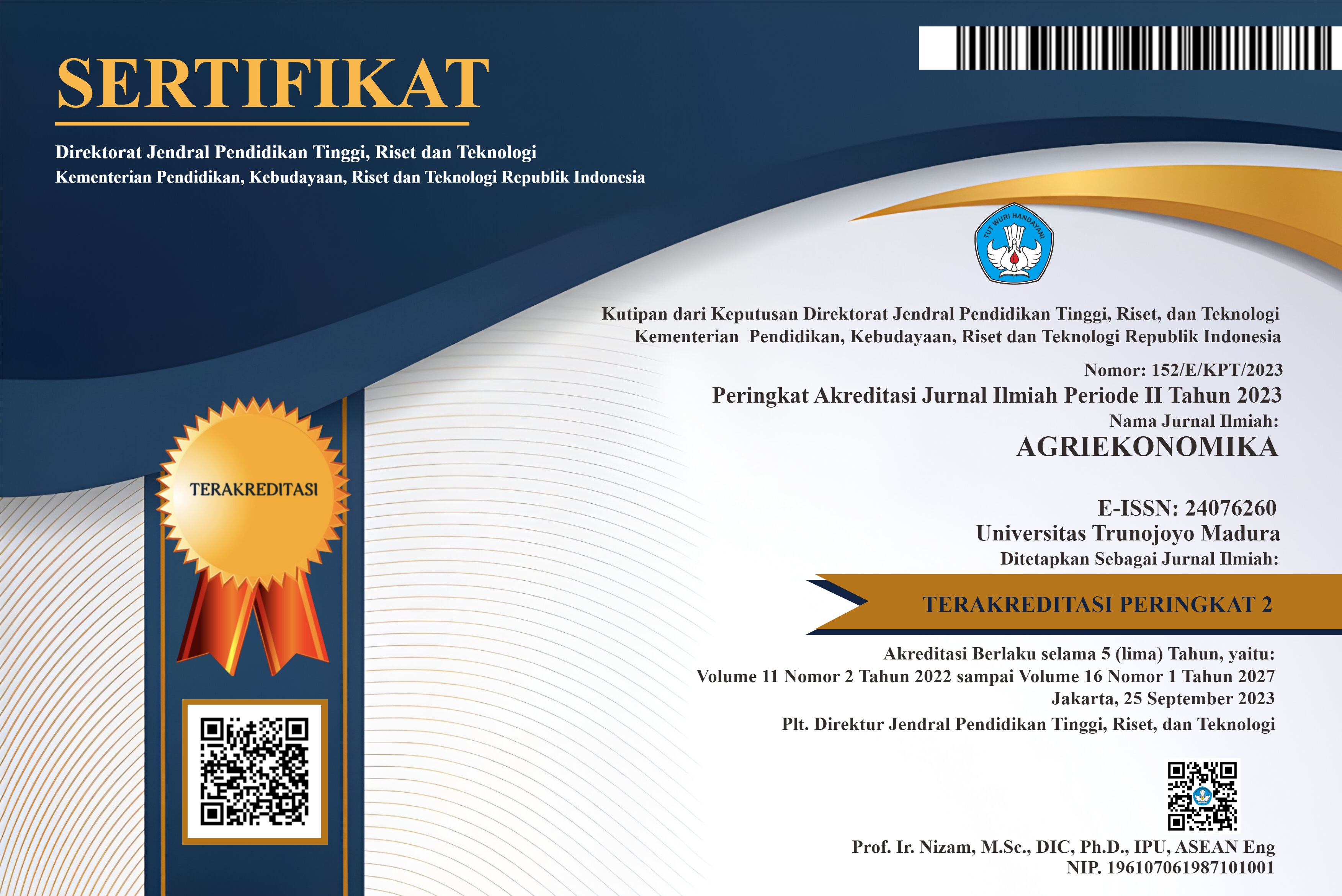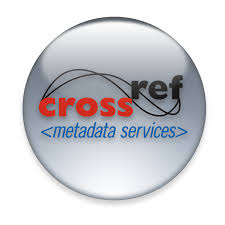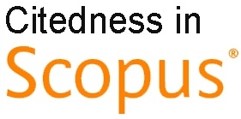Leading Commodities of Food Crops and Plantation Subsector in Pinrang District
Abstract
This study aims to determine the food crop and plantation subsectors which are the leading subsectors in Pinrang District. The determination analyzed using the Location Quotient method which produces commodities classified as a base or non-base commodities which can contribute to increasing farmer income and regional income. The data sources used are primary data from interviews with farmers while secondary data on food crop and plantation production in Pinrang District for five years (2013-2017) were obtained from the Agriculture Service and BPS of Pinrang District. The results show thatthe food crop subsector is a base commodity and is very potential, namely wetland paddy and maize which have a base area in five sub-districts in Pinrang District. Whereas in the plantation sub-sector which is the basis, namely coconut, coffee, and cocoa, although the highest LQ value is in coffee commodities in Lembang subdistrict. Thus, commodities in the food crops and plantation sub-sectors are basic commodities that are worth developing. Pinrang District is one of the rice barns in South Sulawesi, which holds the position of Pinrang District as a potential producer of food crops. In addition to wetland paddy, other food crops produced are maize and beans. The most dominant plantation crops in Pinrang District are coconut, coffee, and cocoa, which are excellent crops.
Keywords
Full Text:
PDFReferences
Amalia, F. (2012). Determination of the Leading Sectors of the Economy of the Region of Bone Bolango with the Regulation of the Sector Establishing GRDP. Journal of Ethics, 11 (2), 196-207.
Arsyad, Lincolin. (2005). Introduction to Regional Economic Development Planning (Second Edition). Yogyakarta: BPFE.
Aziz, I. A., Yantu & Lamusa, A. (2015). The Role of the Agricultural Sector in the Economy of Morowali District. e-J. Agrotekbis, 3 (2). 212 - 221.
Central Bureau of Statistics. 2015. Pinrang District in the 2015 Pinrang District Figure.
Harinta, Y, W., Basuki, J, S., & Sukaryani, S. (2018). Mapping and Agribusiness Development of Vegetable Leading Commodities in Karanganyar District. Agriekonomika, 7 (1), 37-45.
Hayati, M., Elfiana & Martina. (2017). The Role of the Agricultural Sector in the Development of the Bireuen District in Aceh Province. S. Agriculture Journal, 1 (3), 213 - 222.
Hayati, N & Nugroho, T. R. (2018). Coastal Agro-Industry Development Based on Leading Commodities of Fish Catches. Agrieconomics, 7 (1), 1-9 |
Juanda, B, R. 2016. Potential for Increasing Rice Production by Increasing IP (Harvest Index) Through Application of Salibu Rice Technology. AGROSAMUDRA, Research Journal, 3 (1), 75-81.
Mangilaleng, E. J., Rotinsulu, D., & Rompas, W. (2015). Analysis of the Leading Sector in South Minahasa District. Journal of Scientific Periodic Efficiency, 15 (04), 193–205.
Marpaung, I., Thamrin, T., & Hutapea, Y. (2016). Increased rice productivity through improved production systems on tidal land in South Sumatra. Proceedings of the Suboptimal National Seminar, 479–487.
Masniadi, R., Suman, A., & Sasongko. (2012). Agricultural Superior Commodity Analysis for Economic Development of Disadvantaged Regions in West Sumbawa District. Business-Economics, 03 (01), 51–64.
Novita, K, A., Dewi, P & Santoso, E, B. (2014). Leading Commodity Development in Food Crops Agriculture Sector in Karangasem District Through Agribusiness Approach. Journal of Engineering Pomits, 3 (2), 184-189.
Rasyid, A. (2016). Analysis of Potential Agriculture Sector Potential in Kediri District 2010-2014. Journal of Development Economics, 14 (2), 100-111.
Ratag, J. P. D., Kapantow, G. H. M., & Accounting, C. B. D. (2016). The Role of the Agriculture Sector in the Economy in South Minahasa District. AgriSosio Unsrat, 12 (2A), 239–250.
Sapriadi and Hasbiullah. (2015). Analysis of Determination of the Superior Economic Sector of Bulukumba District. Iqtisaduna, 1 (1), 71-86.
Simamora, A. P, Sirojuzilam and Supriadi. 2013. Analysis of the Potential of the Agricultural Sector for Regional Development in Humbang Hasundutan District. Economist Journal, 16 (2), 54-66.
Sitanggang, J & Sembiring, S. A. (2013). Development of Coffee Potential as a Superior Commodity in the Dairi District Agropolitan Area. Journal of Economics and Finance, 1(6), 33-48.
Sjafrizal. (2008). Regional Economics Theory and Application. West Sumatra: Baduose Media Publisher.
Sukirno, S. (2004). Development Economics, Processes, Problems and Policies (Second Edition). Jakarta: Kencana Publisher Prenada Media Group.
Susilawati, Sastrawati, I and Wuna, S. 2016. Determination of the Main Commodities in the Food Crops Sector in Bone District, South Sulawesi. Proceedings of the 2016 IPLBI Scientific Meeting, 23-30
Watemin and Putri, R. H. (2016). Comparative Advantages of Holti-Cultural Commodities in Belik District’s Agropolitan Area. Agrieconomics, 5(2), 170-176.
Wicaksono, I. A. (2011). Analysis of Location Quotient Sector and Agricultural Subsector in Districts in Purworejo District. Journal of Agricultural Sciences, 7(2), 11-18
Yolanda, H. M, Tarumun, S and Eliza. (2014). Effects of Plantation Subsectors on Economic Growth in Kampar District. Jom Faperta, 1(2), 1-15.
DOI: https://doi.org/10.21107/agriekonomika.v8i1.4999
Refbacks
- There are currently no refbacks.







